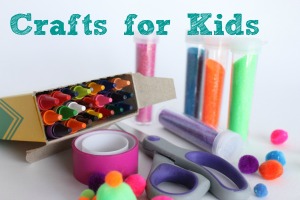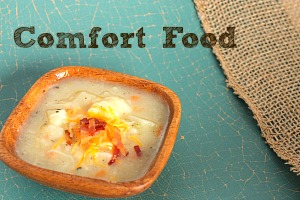
As a parent, I know just how much thought goes into something as simple—and as essential—as choosing the right baby carrier. It’s not just about picking what looks good. It’s about safety, comfort, ease of use, and how it’ll hold up as your baby grows from a sleepy newborn into a wiggly toddler. The early days blur by fast, and having a carrier that grows with your child? That’s a parenting win.
The best baby carriers are those that offer real versatility. We’re talking adjustable fits, smart design for even weight distribution (because let’s be honest—our backs need love too), and multiple ways to carry your little one: front, back, or even on the hip. When you find a carrier that checks all the right boxes—comfort, function, and safety—it becomes less of a purchase and more of a daily companion. Brands like Momcozy have stepped up to meet these needs, designing carriers that prioritize both caregiver comfort and baby safety. Known for combining thoughtful design with real-world parenting practicality, Momcozy’s carriers are built to adapt as your baby grows—without sacrificing ease of use or support.
Grows with Your Baby: Adjustable Carriers Supporting 7–44 lbs
Let’s be real: babies grow quickly, and constantly swapping out gear gets old fast. That’s why I’m a big fan of adjustable carriers that work well for both tiny newborns and curious toddlers. Many support up to 44 pounds or slightly less—plenty of room to grow. These carriers are designed to move with your child—literally—shifting to different carry positions depending on their age and stage.
Front carry is great for bonding early on, but as your baby gets bigger (and heavier), shifting to a hip or back carry can ease the strain on your body. A carrier that adjusts to both you and your baby’s changing needs is gold.
Not to mention, most of these carriers come with adjustable waistbands and straps, so everyone—whether tall, short, broad-shouldered, or petite—can get a secure and comfortable fit. It’s little details like that which make everyday routines a whole lot smoother.
And when I say “long-term usability,” I’m talking about the kind of carrier you toss into your stroller basket or grab from the hallway hook because it just makes outings, errands, and even airport layovers easier.
Understanding Weight Limits
Weight limits might not be the first thing you think of when buying a baby carrier—but they matter. A carrier that can support up to 44 pounds means you’re good to go from those early snuggles to toddlerhood—without needing to upgrade halfway through.
Just as important is the way the weight is distributed. A properly fitted carrier should feel balanced, not like you’re lopsided or carrying a mini kettlebell. Breathable materials, reinforced stitching, and solid buckles also play a role in keeping things safe and comfortable.
Always double-check the manufacturer’s recommendations and follow their fit guides. It’s worth the few extra minutes to get things adjusted just right.
Types of Adjustable Carriers
There’s no shortage of baby carriers out there—and each type brings something different to the table. Depending on your lifestyle and comfort level, one might suit you better than another.
Soft-Structured Carriers (SSCs)
These are probably the most popular for a reason. Soft-structured carriers (often shortened to SSCs) offer a great balance between structure and comfort. With padded shoulder straps and a supportive waistband, they help evenly distribute weight, which your lower back will thank you for.
They work well for newborns and toddlers alike and usually allow for multiple carry positions. The straps and buckles make them super adjustable, so whether it’s mom, dad, or grandma wearing it, everyone gets a good fit.
Wraps and Slings
Wraps and slings take a more customizable approach. They’re essentially long pieces of soft fabric that you tie and wrap around yourself and your baby. While they can take a bit of practice to master, once you get the hang of it, they offer an incredibly snug and soothing fit.
Parents often reach for these in the early newborn days because of how naturally they mold to the baby’s body—and let’s be honest, because that sleepy snuggle against your chest is the best feeling ever.
Hip Seat Carriers
These are a little different. Hip seat carriers come with a built-in padded seat for your baby to rest on. They’re perfect when your little one wants to be carried but also wants the freedom to wiggle, turn, and look around.
The seat helps shift the baby’s weight to your hips rather than your back or shoulders. It’s a lifesaver during short errands or when your baby insists on being carried in and out of the stroller a hundred times.
Key Features to Consider
There’s no “perfect” baby carrier, but some features definitely make life easier:
- Weight Capacity: The sweet spot is typically 7 to 44 lbs. This gives you plenty of use from the newborn days all the way into toddlerhood.
- Adjustability: Look for a carrier with adjustable straps, buckles, and waistband. A custom fit means better comfort for both you and your baby.
- Carry Options: Carriers that allow front, back, and hip positions give you flexibility. It’s nice to switch things up as your baby grows or your own back needs a break.
- Safety Features: Strong buckles, secure fastenings, and proper stitching are non-negotiable. These are what keep your baby snug and safe.
- Breathable Materials: Soft fabrics that allow airflow help prevent overheating, especially during warm weather or long walks.
- Ergonomic Design: Look for padded shoulder straps and lumbar support. Your spine deserves it.
- Ease of Use: Some carriers are intuitive and quick to put on—even one-handed. That’s a real perk when you’re juggling a diaper bag, snacks, and a suddenly grumpy toddler.
- Cleaning: Babies are messy. Carriers that are machine-washable or have easily wiped-down fabrics save time and sanity.
One standout that ticks a lot of these boxes is the baby carrier. It’s designed to grow with your baby and offers great lumbar support, breathable fabric, and adjustable features that make it feel like it was made just for you. Plus, it’s easy to take on and off—huge win in my book.
Safety Guidelines
Keeping your baby safe while babywearing is always the priority. Here’s what I always remind myself to check:
- Know the weight limits: Don’t exceed them. The limits are there for a reason.
- Get a good fit: Make sure everything’s snug—not too loose, not too tight. A well-fitted carrier will feel secure and balanced.
- Inspect the carrier often: Give those straps, seams, and buckles a once-over every so often to make sure nothing’s wearing out.
- Support baby’s posture: Keep your baby in a position that supports their hips and spine. Their legs should form an “M” shape with knees higher than their bum.
- Stay cool: Literally. Make sure your baby isn’t overheating, especially in warmer climates or during long walks.
- Watch your baby: If they seem uncomfortable or start fussing more than usual, take a break and adjust the fit or position.
By keeping these tips in mind, you can babywear with confidence—knowing your little one is safe, supported, and close to your heart.
Conclusion
A good baby carrier isn’t just a parenting accessory—it’s a parenting ally. As your baby grows, a versatile carrier becomes one of those items you rely on again and again, from lazy strolls in the park to errands when the stroller feels like too much.
I’ve learned that investing in a quality, adjustable carrier isn’t about having the fanciest gear—it’s about finding something that fits your life, keeps your baby comfortable, and gives your back a break. Whether it’s a structured carrier, a cozy wrap, or a hip seat, the right pick will carry you (and your little one) through so many milestones—literally and figuratively.


















